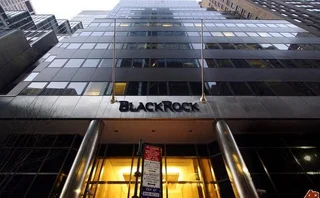

Creditors struggle to stop stressed firms borrowing more
Dropdowns, uptiers and double dips grow in number, and lenders can't stop them
In 2016, US clothing retailer J Crew was running into trouble. A move upmarket had alienated core customers. The halo effect of celebrity fans such as Michelle Obama, who once sung the brand’s praises on a talk show, had dimmed. J Crew was also buckling under a pile of debt and, with maturities looming, it was only a matter of time before the company faced default.
To dig itself out of this hole, J
Only users who have a paid subscription or are part of a corporate subscription are able to print or copy content.
To access these options, along with all other subscription benefits, please contact info@risk.net or view our subscription options here: http://subscriptions.risk.net/subscribe
You are currently unable to print this content. Please contact info@risk.net to find out more.
You are currently unable to copy this content. Please contact info@risk.net to find out more.
Copyright Infopro Digital Limited. All rights reserved.
As outlined in our terms and conditions, https://www.infopro-digital.com/terms-and-conditions/subscriptions/ (point 2.4), printing is limited to a single copy.
If you would like to purchase additional rights please email info@risk.net
Copyright Infopro Digital Limited. All rights reserved.
You may share this content using our article tools. As outlined in our terms and conditions, https://www.infopro-digital.com/terms-and-conditions/subscriptions/ (clause 2.4), an Authorised User may only make one copy of the materials for their own personal use. You must also comply with the restrictions in clause 2.5.
If you would like to purchase additional rights please email info@risk.net
More on Investing
Review of 2025: It’s the end of the world, and it feels fine
Markets proved resilient as Trump redefined US policies – but questions are piling up about 2026 and beyond
Asset managers prep autocall ETFs with assets tipped to hit $30bn
Actively managed strategies wait in the wings after systematic approach nets Calamos $500m
Citi launches core inflation QIS
Custom indexes eliminate energy and food prices to ease trading of stickier inflation trends
BlackRock appoints Pierre Sarrau as chief risk officer
Current CRO Edward Fishwick will be head of research at BlackRock’s RQA group
Japan’s yen swaps go global
JSCC isn’t just clearing swaps, it is clearing the way for the next stage of Japan’s financial evolution
How Bessent learned to stop worrying and love the T-bill
Short-dated issuance shows no signs of slowing. Some fear it could end badly.
Why a Trumpian world could be good for trend
Trump’s U-turns have hit returns, but the forces that put him in office could revive the investment strategy
Hedge fund holdouts boost euro steepener bets into year-end
After some investors took profits in September, those that stayed in the trade are now doubling down







